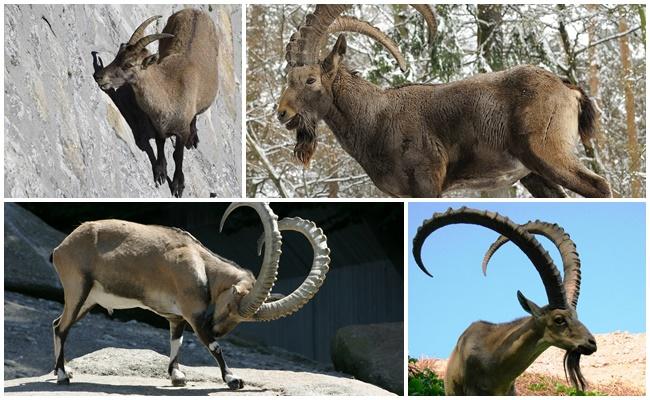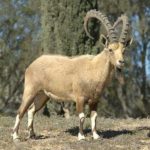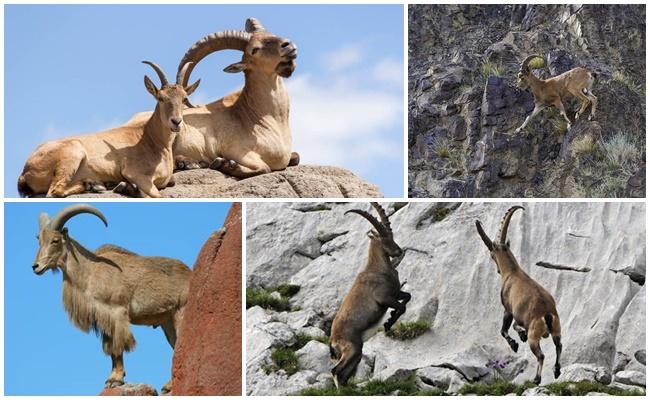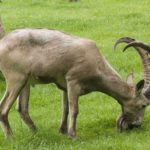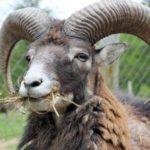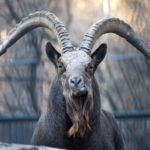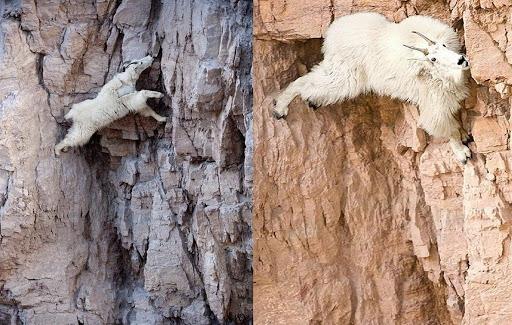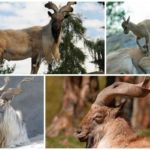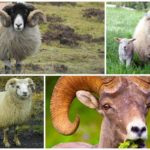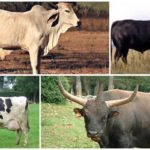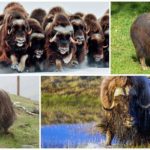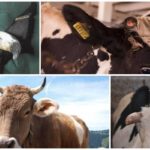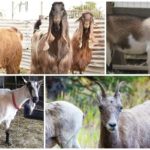The mountain wild goat lives in mountainous areas and feeds on everything it can find in the mountains. Domestic goats that graze in our meadows also belong to this genus. Domesticated animals inherited only their exterior from their ancestors. Wild goats are much smarter than rams and sheep. They are able to survive where predators cannot reach them. Wild animals, compared to domestic ones, have very large horns. In addition, they have a more brutal appearance, and females have a small udder.
general characteristics
Mountain goats are artiodactyl mammals from the bovid family, familiar to everyone at least from pictures.They live, as the name suggests, mainly in the mountains of Eurasia and Africa. These are the oldest representatives of the fauna of the northern hemisphere.
Mountain goats are distant relatives of mountain sheep, snow goats, chamois and even gorals. They can live at an altitude of 5 thousand meters above sea level. There are about ten species of these graceful animals. They are united into one genus by common morphological characteristics and a love for high mountain areas. The habitats of different species of wild goats rarely overlap. They chose this unusual habitat to escape predators.
The animals are hardy, agile, undemanding when it comes to food, and are able to survive on sparse vegetation. They feed on grass, branches of bushes and tree bark, mosses and lichens. These ruminant animals love salt and are ready to climb the steepest cliff for it, which often surprises tourists and photographers.
They owe their climbing abilities to their compact body structure, strong legs, narrow, tenacious and cloven hard hooves with soft padded soles that can stick to the surface of any stone. Mountain goats have excellent coordination and a developed sense of balance. These animals, like butterflies, jump and flutter around the mountains, and if they cannot stay on one ledge, they quickly jump to another. They have very strong trained leg muscles, and they begin to jump on rocks from infancy.
What does a mountain goat look like?
A distinctive feature of these animals is their amazingly beautiful horns, which grow throughout their lives and reach a length of more than one meter (in males). They are hollow inside and have transverse thickenings on the outside.The horns can be arched, curved back or to the sides, twisted into a spiral or screw. Goats never throw this attribute off their heads. Females also have horns, but they are short and dagger-like.
Mountain goats, as a rule, have a medium-sized dense body, a strong neck, a small head with a convex forehead, and strong, medium-length limbs. The height at the withers is 50-95 cm, and the length of the body is 1.2-1.8 m. The ears are erect, the tail is short. Goats have a goatee on their chin. The body of the animals is covered with short, thick and coarse hair of brownish, sandy, gray or yellowish color. Goats have an excellent sense of smell and vision (300 degree vision), and a well-developed brain.
These animals have been familiar to people for many millennia. The mountain bezoar goat is the ancestor of the domestic goat, the one that is bred for milk, meat and wool. These animals were previously sacrificed, and myths and legends were written about them. The mythical goat Amalthea, according to the beliefs of the Greeks, even fed the baby Zeus with her milk.
Domestic goats are milked after the first lambing. Wild animals are not milked. All milk is fed to the cubs. Females have an udder with two teats. Wild goats weigh approximately 45-90 kg. Males are larger, their body weight is 50-125 kilograms. Females give birth to kids weighing 3-4 kg.
Breed varieties
Mountain goats are divided into three groups. The classification is based on the structure of the horns. In total there are 8-10 species of these beautiful animals. Mountain goat groups:
- Capricorns. Representatives (goats): Iberian, Nubian, Siberian, Ethiopian and Alpine (ibex). These are animals with wide (near the head) and gradually tapering arched large horns. Length - up to one meter (in males).Numerous transverse ridges are visible on the upper surface. The horns are curved back and slightly diverge to the sides. Animals of this group live in mountainous, steppe and hilly areas.
- Tours. Representatives: Western Caucasian, Eastern Caucasian, Severtsova. Turs have long horns that grow back or to the sides. They have an arcuate or semi-spiral shape. The surface of the horns is slightly ribbed. Turs live mainly in mountainous areas (in the Caucasus).
- Goats. Representatives: point-horned goat, domestic goat (more than 300 breeds). Unlike domestic animals, horned wild goats live in Asia, in the mountains. They have long, twisted horns that resemble a corkscrew. Female horned animals also have twisted horns, but small.
Lifestyle
Mountain goats usually live in mountainous areas. Representatives of this genus of fauna avoid flat and flat areas. They like to gallop along mountain slopes, rocks and cliffs. These herd animals do not leave their native places even in winter. In the summer they simply climb as high as possible into the mountains, and in the winter they have to descend to the foothills. Males and females live separately from each other, in small groups. Bucks join female goats only during the mating period. Kids live with their mothers for up to a year. In winter, herds of animals become larger. In spring, goats disperse in groups of 6-7 individuals.
What do they eat?
Mountain goats feed on everything they find in the mountains: grasses, branches of bushes, mosses, lichens. They taste everything they see and then decide whether they will eat it or not. Wild animals eat bark, leaves, fruits. If desired, they can climb a tree. They love salt very much, for which they even climb the walls of a concrete dam.Animals graze early in the morning or late in the evening. At lunchtime they rest or hide in the shade from the sultry sun. In places where predators can lie in wait for them, they go out to pasture only at night, and during the day they hide in rocks.
Features of behavior
Mountain goats spend most of their lives in the same area within their native herd. From childhood they get used to the mountains and to moving through mountainous and steep terrain. Animals easily jump over cliffs and balance perfectly on a vertical surface. They try to stay away from people and predators.
Mountain goats run fast, jump high, can climb any steep cliff, and jump over a precipice. They are very careful, intelligent and observant, and in case of danger they show courage. The herd usually has a guard goat that watches the area. He warns his relatives about the danger by bleating; if necessary, the animals engage in battle with the enemy. True, most often wild goats quickly run away and hide in hard-to-reach rocks. Only males fight among themselves, and then only during the mating season.
Dangers and Enemies
Mountain goats live their entire lives in hard-to-reach mountain areas, escaping from predators. They are hunted by bears and wolves, lynxes and leopards, panthers, tigers, and leopards. Little goats can become prey for golden eagles, eagles, kites, and hawks. Danger lurks everywhere for these wild mountain animals. In winter, they die due to avalanches, severe frost and cold winds. In summer, humans hunt animals. True, many rare species (alpine, markings, Severtsova) are protected by law, that is, hunting them is prohibited.
Reproduction and offspring
At the end of autumn, mountain goats begin the mating period. Males find females and engage in fierce fights among themselves. True, mating fights are always conducted in compliance with certain rules. Males strike only with their horns (the upper surface); they do not butt heads like wild rams. Their beautiful headdresses often suffer during battles.
Males never hit unprotected parts of the body with their horns and drive the enemy away only a short distance. The winner of the fight gets the entire herd of females. During the mating season, males emit a pungent odor and become more aggressive than usual.
Pregnancy in goats lasts 5-6 months. In the spring they give birth to 1-4 young. From the first minutes of life, goats can stand on their legs and can suck milk from the udder. The cubs are very playful and active, jumping and frolicking a lot. The young live with their mother for about a year, and then the females remain, and the young males form their own herd. Adult goats jump along steep cliffs in splendid isolation. Animals live on average 10-20 years.

